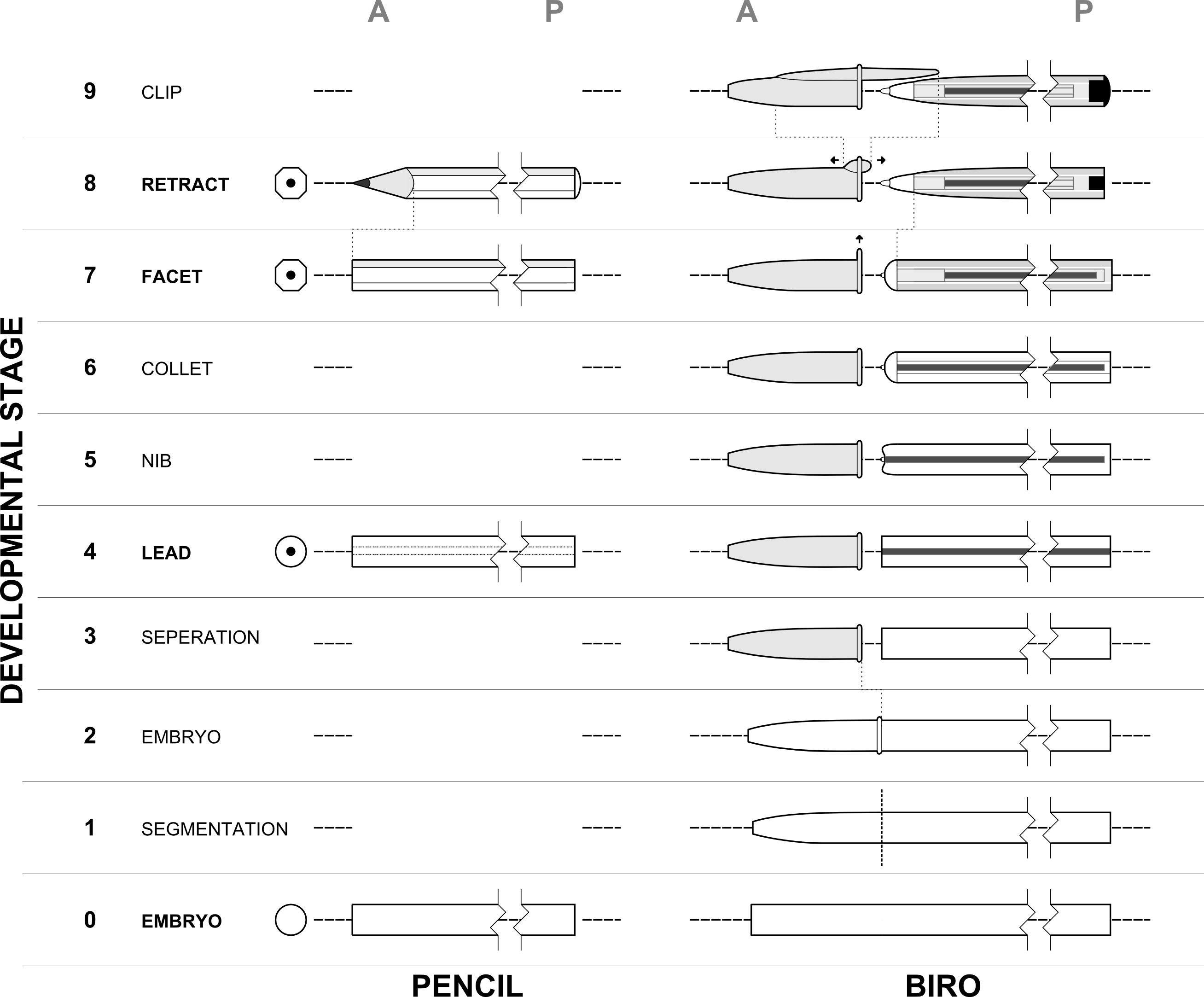Morphogenetic Prototyping v0.5
What if a biologist had never seen artificial design before?
Morphogenetic Protototyping is a meta disciplinary design and analysis method for buildings and their systems.
Biologists call a fully grown organism the phenotype and the genetic code that created it the genotype. Before biologists could understand the genes of an organism from genetic sequencing, they used comparative biology (measuring, drawing and inferring differences between species) to ‘guess’ the genes that encoded the organism. Morphogenetic Prototyping applies the same approach to guess and sequence the ‘genes’ of building systems. The current version of the method has 5 parts:
M1 Features
Identify the axis, ‘segments’, features and scope of the system or artefact you are studying.
- Explore Part 1 steps here
M2 Stages
Imagining it had really grown, in what order would the features appear and what is their function? The stages allow us to expand the linear design space into multiple parallel reversible tracks.
- Explore Part 2 steps here
M3 Biomimetics
Gain biomimetic inspiration for new solutions for the functions you have identified in each growth stage in M2.
- Explore Part 3 steps here
M4 Evolution
Model the evolution of the building system to help us reuse, improve and learn from previous designs. Try and imagine what new systems might emerge in the future, based on your study.
- Explore Part 4 steps here
AP[5] Architecture / Carve
Transplant materials and building systems at any stage in the design process. This final part requires new design experiences, tools, interfaces and collaboration opportunities for the 21st century.
- Explore Part 6 steps here
How are we going to learn all that?
The course uses a spiral learning technique, wherein you repeat the same method with increasing levels of complexity inorder to master it and be able to use it independently. Therefore in this course we use the method in the following ways:
- A1 your first experience with the method focusing on a cup (PART M1, M2, M3 and M4)
- A2 your second experience (PART M1) this time with a building system
- A3 your third experience (PART M2 and M3) this time with a building system
- A4 your fourth experience (All Parts) this time with a complete building.
- A5 reflect on your learning through these spirals.
Where did it come from?
Morphogenetic Prototyping, originates in the [morphogenetic Prototyping] (MP) methods I developed between 2014 and 2018 in Australia, at DTU it has been refined to have a clearer interface to traditional biomimetics and a better understanding of systems engineering. Originally focused on Architectural design tasks, it has been extended here to focus on building systems, their integration into buildings and, in future iterations, other products.
Next steps
The Agile prototyping method raises many questions including and not limited to:
- The future design experience
- Carving Morphogenetic Prototypes (2015)
- A Katana Design Experience (2018)
- The role of designers and engineers in the future
-
A Morphogenetic Architecture for Intelligent Buildings (2015)
- The relationship between design / engineering and biology
-
Suburban Mutations: Towards the Multi-Dimensional Appropriation of Science in Architecture (2016)
- A new theory of design
- From Hopeful Monsters to Morphogenetic Prototypes (2016)
How this can feedback into biology
1. Identify the functions
- Define the functions of your chosen building system.
- What features of a cup support these functions?
2. Feature variables
- Imagine a universal design system for your building system;
- How would your building systems features change for different building projects?
- What variables would these features have?
- Could you define the range of the variables that could support any building?
3. Out of order?
- Thinking procedurally, in what order would we apply functions to the design?
- Can we find a universal ‘pseudo’ developmental sequence for your building system?
- Which feature would appear first?

4. Is is growing?
- Could we consider these functional variables to be a bit like the suppression and expression of genes in a growing organism?